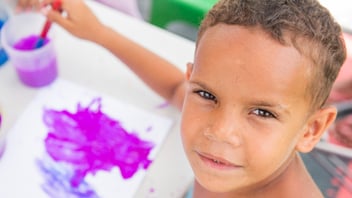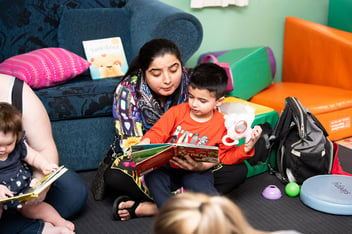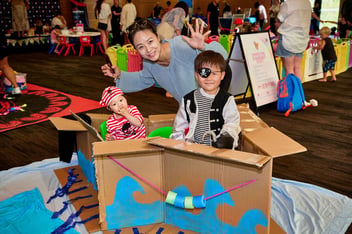
Messy Play 101: Sensory Activities for Creative and Curious Children
Blog > Messy Play 101: Sensory Activities for Creative and Curious Children

Messy Play 101: Sensory Activities for Creative and Curious Children
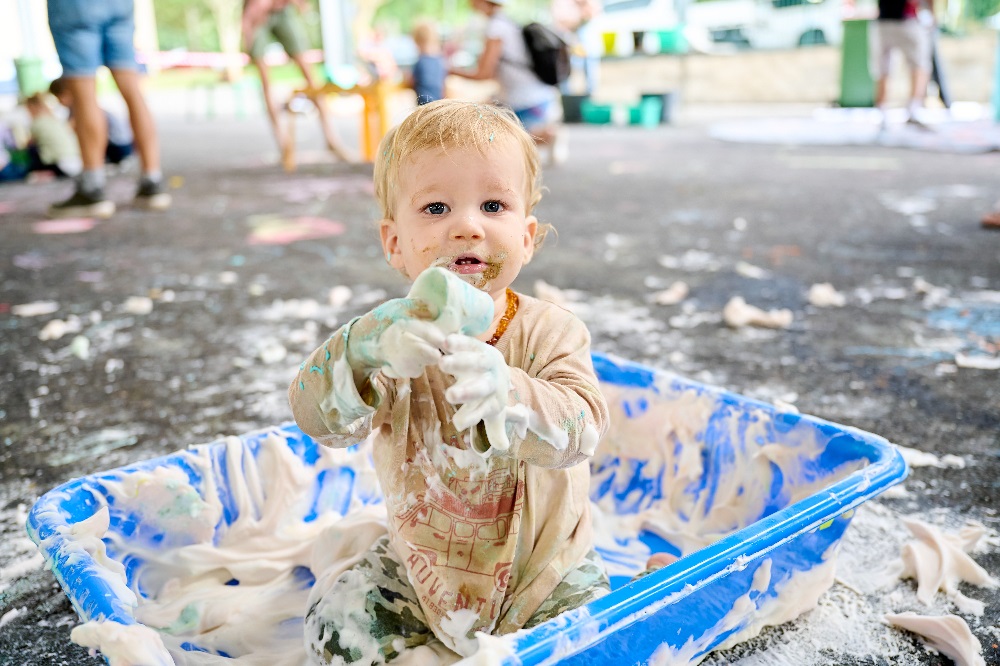
Children and mess – every parent and carer knows you can’t have one without the other. Some days it’s like a tornado tore through your home throwing teddies, blocks, cushions, blankets, books and snacks everywhere.
Teaching children to tidy up and be responsible for their belongings is important because it helps prepare them for kindergarten and school. Just as important is giving them the freedom to make a mess sometimes. So how do you get the best of both worlds?
By creating space for messy play!
Don’t worry though – messy play is different to the ‘mess’ of clutter and toys – this type of mess has huge creative and imaginative benefits for children.
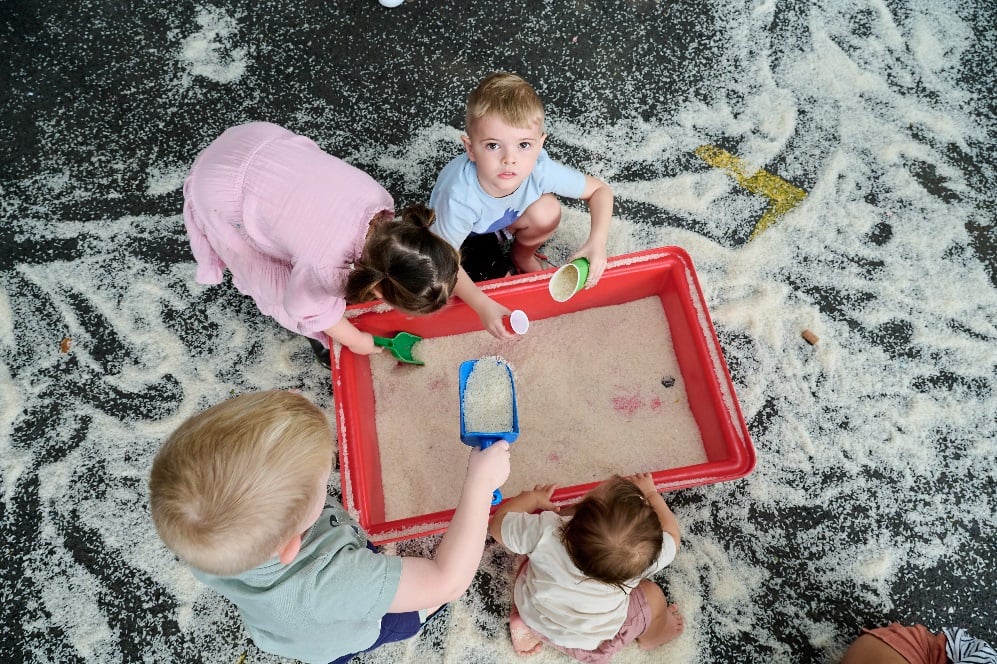
Learning through messy play
Messy play involves using substances and materials that provide a tactile experience for children. Exploring things like sand, mud or jelly is a sensory delight for them. They discover how different things feel, look and smell. How children see and feel their world helps them to understand it, so messy play teaches them about their environment.
It’s also excellent for helping to build social and motor skills. As their little fingers try to grasp grains of rice or massage a ball of clay, it promotes the mind-body connection that’s so important for later development.
Messy play is also vital in fostering math and science skills. Children experiment with cause and effect to see how combining materials changes the outcome or learn to make patterns with materials like pop sticks or coloured sand.
Allowing children to let their curiosity lead them while they mix objects and materials is empowering. It helps to strengthen their decision-making skills and encourages them to try new things.
Best of all, messy play at home makes it easily accessible and affordable.
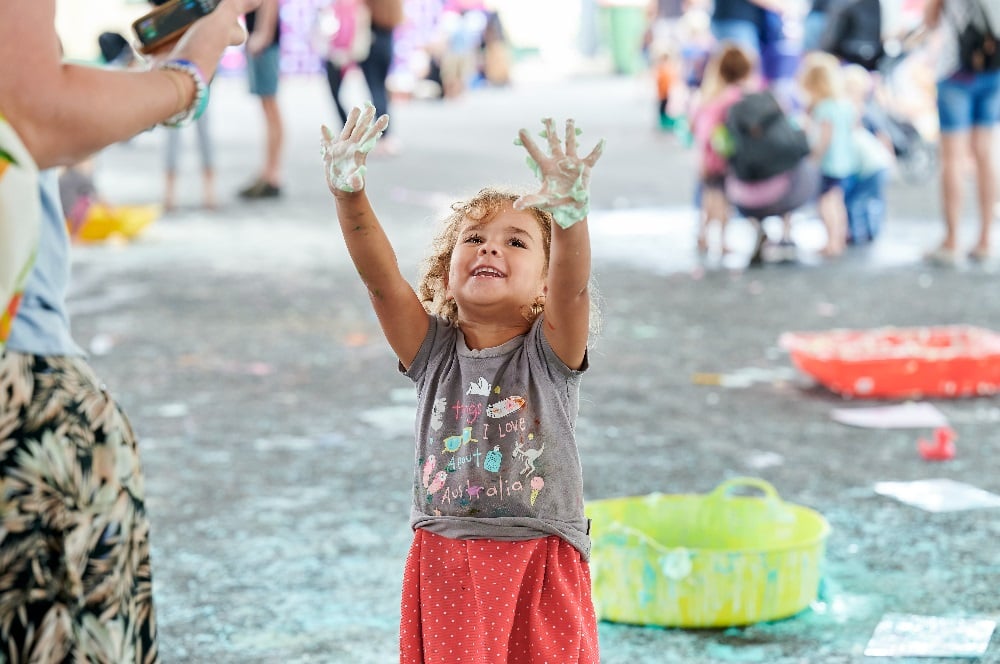
How can I incorporate messy play (without having a huge mess to clean up!)?
Parents everywhere love sending their children to childcare because they can make as much mess as they want there, and they don’t have to clean it up. It can be easy to provide opportunities for messy play at home too – it just takes some planning. Getting children involved in the clean-up routines also teaches them to be less messy over time if they know they’ll have to clean up later.

Set up a sensory box
Creating a sensory box helps to keep any mess contained.
Choose a variety of materials such as pom poms, pop sticks, pipe cleaners, tissue paper, foil, and large beads. (Ensure your choices are age-appropriate to keep your little one safe.)
You can also include some wet materials such as a tub of homemade slime or a can of shaving foam.
Having all the materials ready to go makes messy play easier. You’ll also be able to tuck it away when you’re done to make those messy moments together extra special.
Plus, it’s perfect for bringing out when they’re feeling bored with their toys. Having everything neatly gathered in a box makes it easier to pop out of reach for safety too.
Before you begin, prepare where you’ll play together. A tarp, shower curtain or plastic play mat are ideal for laying on tables or the floor. This way you can easily gather it up and shake off any excess mess, like sand granules, outside when you’re done.
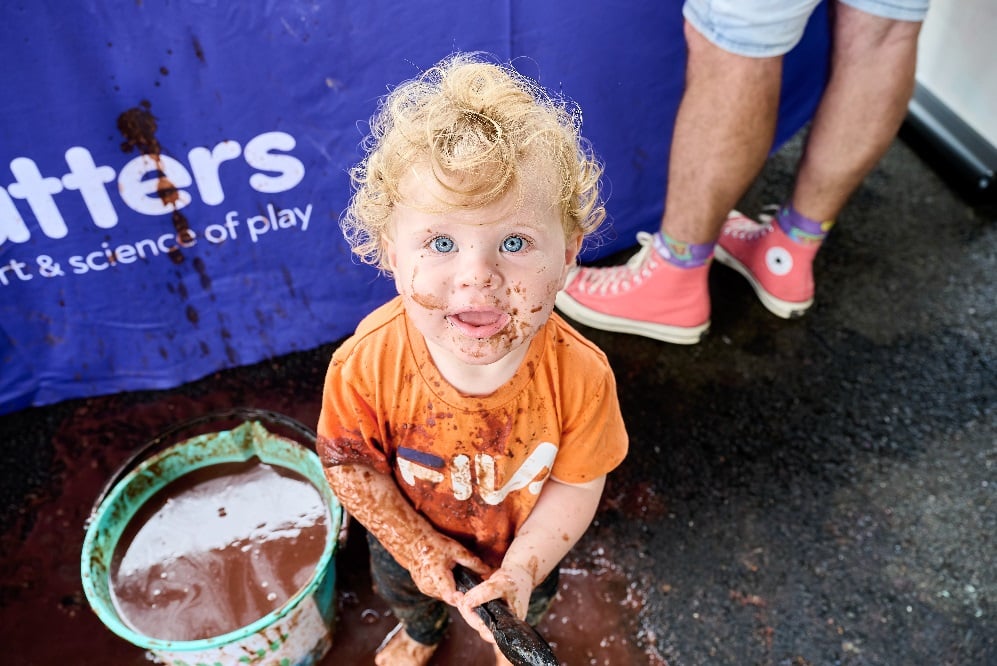
Messy play in nature
Sometimes the best learning experiences are free. Step into your backyard for a messy adventure. Make mud pies together, spread out rocks, sand and pebbles to walk over or gather sticks to build a cubby.
Mud play is a favourite for most kids because of its lovely squelchy nature and the ability to turn it into anything they can imagine. Research is now suggesting that mud play may also be a biological need for children. Evidence is also developing around how mud play may help to reduce allergies and asthma symptoms.
Muddy play ideas:
- Take toy dinosaurs into a mud pit and turn it into a whole new world.
- Use old pie tins to create a mud bakery.
- Create a muddy car wash by adding dishwashing liquid to runny mud and covering toy vehicles in it.
- Take some paper and brushes outside and paint with mud.
- Build a muddy river by turning foil into a half tube and filling it with muddy water. Try floating leaf and stick boats down the river for extra fun!
- Use sticks or flowers to make shapes and letters in mud.
Connecting with nature is proven to reduce stress so playing in your backyard helps to calm both your and your child’s busy minds. Best of all, playing in mud is guaranteed to become a fond childhood memory for your precious ones as they grow up.
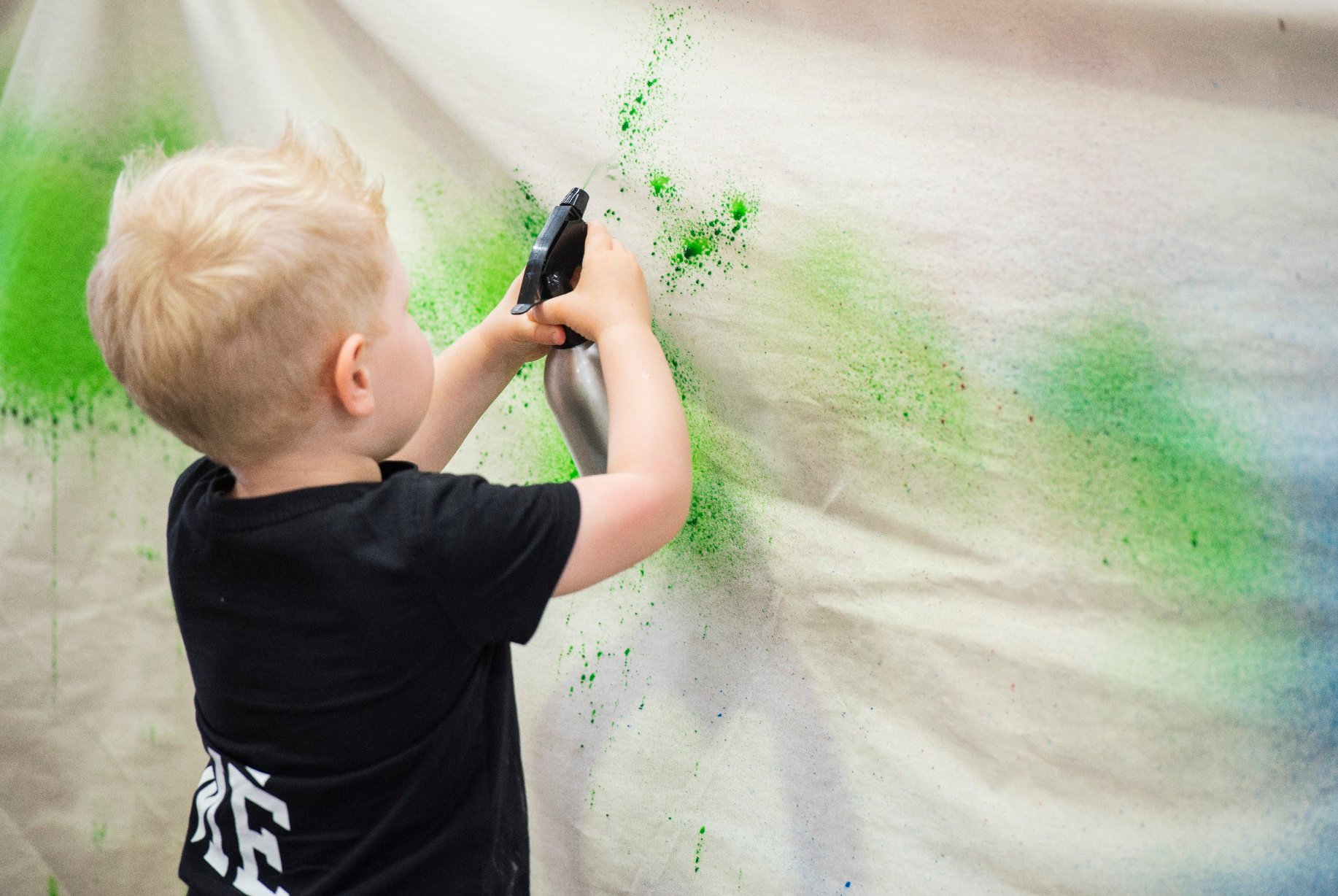
Scrub up and play at bath time
Skip the showers and turn bath time into a double duty playtime. Children love to play with water and it’s a great way for them to experience cause and effect as they mix, blend and play with water.
Some ideas to bring a splash to your bath time:
- Make some bubblebath playdough
- Add glowsticks to the water and turn off the lights for a bath time disco party
- Make ice blocks with added food colouring
- Add water safe toys
- Bring in some cups, spoons and jugs
- Add corks to the bath
- Add foam letters
- Make boats from sponges
- Add a drop of food colouring to bubble bath or shaving foam
- Make your own bath bombs
Children should always be supervised around water to prevent drowning.
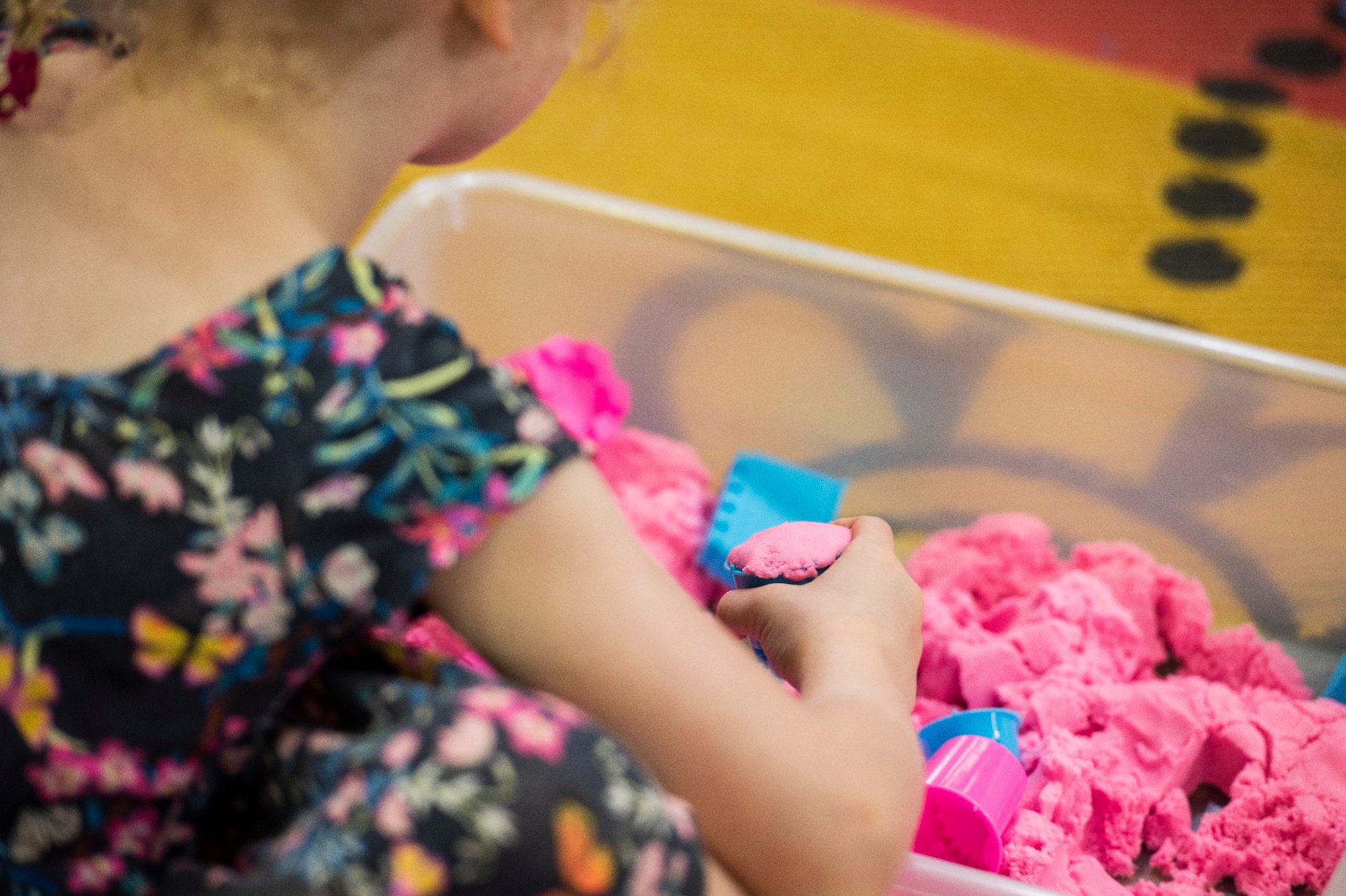
Edible Mess
Young children love to explore with their mouths so give these food-safe ideas for messy play a try:
- Create a sea of jelly – use blue or green jelly and let your child play with toy dolphins, turtles, submarines, mermaids, sharks or any other sea-beast in it.
- Ice cube painting – freeze ice blocks with different food dyes then let your child rub the ice cubes over paper or on the pavement outside. You could even fill a tub with the cubes and turn it into an arctic adventure!
- Finger painting – create edible paint by adding food dye to small containers of plain yoghurt.
- Oaty landscape – fill a tub with oats and turn it into a construction site or the perfect world for underground toy animals.
- Peanut butter play dough – if your child doesn’t have a nut allergy, let them try shaping and moulding peanut butter. (But be prepared for them to try it next time you serve up peanut butter on toast too!)
- Build with food – try poking pretzels into marshmallows or sticking watermelon cubes together with buttercream icing.
- Spaghetti art – colour cooked spaghetti with food dye and let your child create a bright, textural picture.
Another bonus of messy play is how letting children discover different textures also helps to overcome fussy eating.
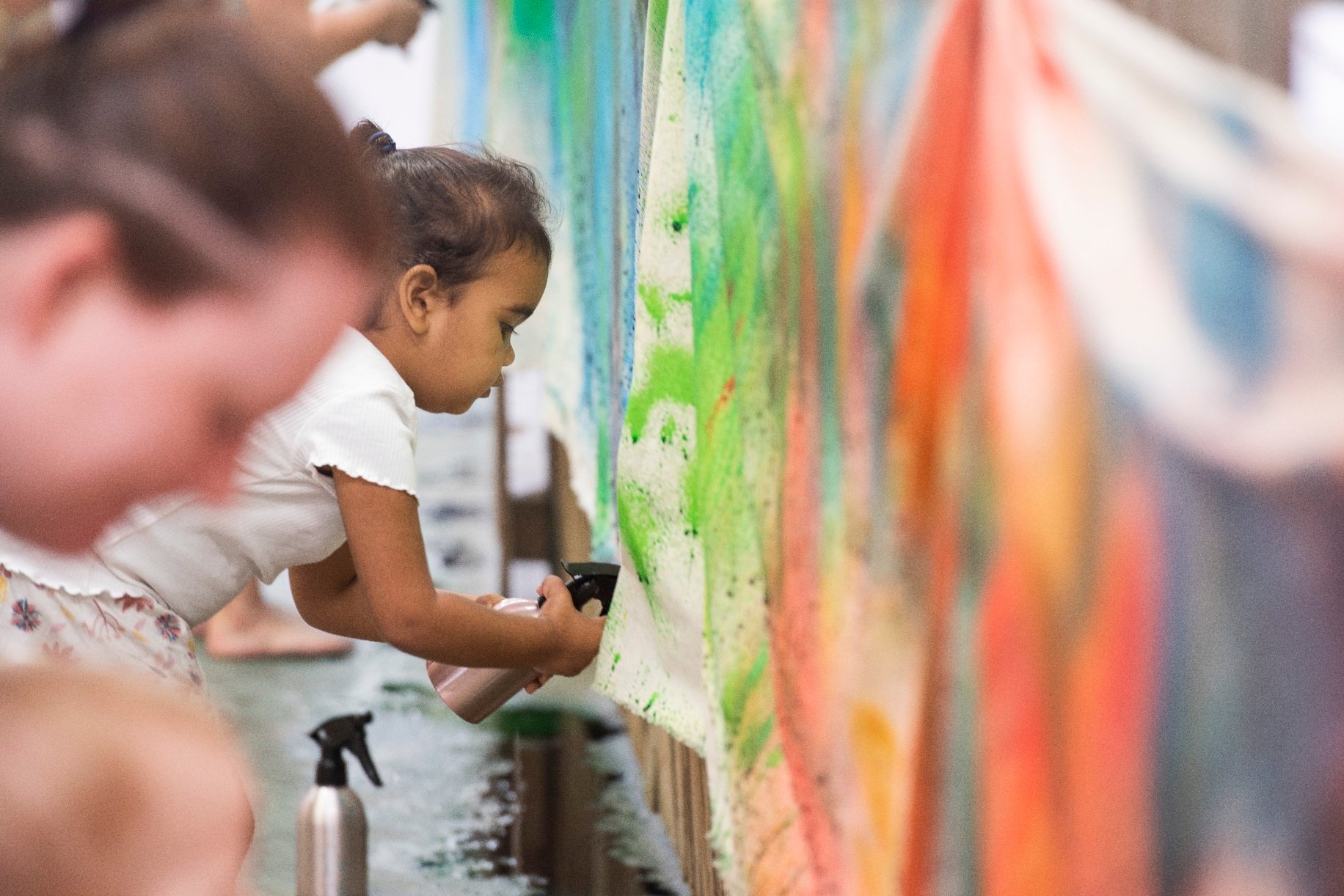
Growing Responsible Children
The learning doesn’t start or end with playtime. Getting your child involved in setting up and cleaning up after a messy play session is a fantastic way to help them learn responsibility. They’ll feel a huge sense of achievement at being able to follow your age-appropriate instructions which boosts their self-esteem.
Giving children the chance to let their imaginations run wild helps them to become healthy, innovative and confident adults.
Find a Messy Play Matters event near you: https://playmatters.org.au/events/messy-play-matters
Resources:
https://natureplayqld.org.au/blog/why-playing-in-the-mud-is-more-than-just-fun
https://natureplaysa.org.au/wp-content/uploads/2017/08/Nature-Play-Downloads-Mud-Info-Sheet.pdf
Find a play experience near you:
Subscribe to our newsletter >
Related content:
Advertisement:
.jpg)

.jpg)




